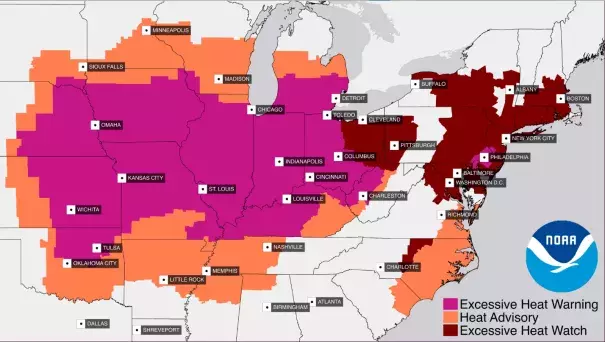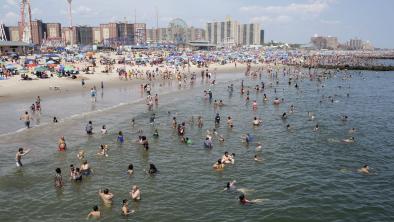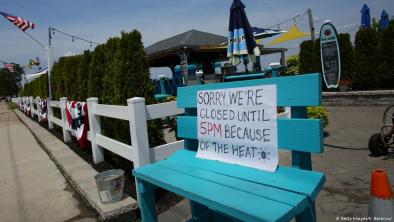'Dangerous heat wave is building' as temperatures spike in central, eastern U.S.

The trigger for this heat wave is a sprawling, strong high pressure area, also known as a "Heat Dome," building across the U.S. Another high pressure area in the Western Atlantic, which is known as the "Bermuda High," is also a key player, since the circulation around these weather features is pumping hot and humid air from south to north. Hurricane Barry's remnants have added to the misery buy bringing a surge of sultry, swamp-like tropical moisture that has blanketed the heat wave zone. As a measure of that moisture, many locations along the East Coast reported dew points of 80 degrees on Wednesday, about as high as such temperatures go in non-tropical locations.
...
The Weather Service projects 123 record warm low temperatures to be tied or broken.
For example, the overnight low temperature at New York's Central Park observing station is not forecast to drop below 80 degrees on Saturday and Sunday, and could tie or break the daily records of 82 degrees on both nights. Washington is forecast to have three consecutive nights with low temperatures in the low 80s, from Saturday morning through Monday morning.
Such high overnight lows will exacerbate the public health threat from this event. Heat is typically the No. 1 weather killer in the U.S. each year, and heat-related illnesses spike when overnight lows stay warm, depriving the human body of a break from heat stress.
...
As the climate warms due to human activities, numerous studies show that heat waves such as this one are becoming more common and intense, as well as longer-lasting. An expansive study in the journal Proceedings of the National Academy of Sciences last year found a climate change fingerprint in heat waves worldwide. Specifically, it showed that climate change has heightened the chances for record heat across more than 80 percent of the surface area of the globe that has sufficient weather data available. (This research excluded parts of the developing world, where weather monitoring networks are more sparse.) In addition, a sweeping climate assessment published by the Trump administration last year found extreme heat events are on the increase in the United States and have been since the 1960s. Interestingly, summer nights have warmed nearly twice as fast as summer days in the United States, according to NOAA data. This makes heat waves a more formidable threat to public health.
Related Content






